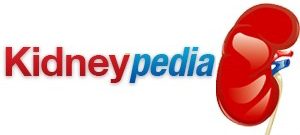Creatinine is a waste product generated by the muscles in their use of energy and doing of work. Blood urea nitrogen, or BUN, refers to nitrogen in the blood resulting from a breakdown of urea, a waste product generated by the liver.
Both of these substances are filtered from the blood by the kidneys and discharged in urine, so that a high level of either of them is a possible indicator of kidney disease or dysfunction. In addition to tests for the level of blood urea nitrogen and of creatinine by themselves, further information may be gained by the ratio between the two.
Levels
Normally, in most people (although this varies by age and gender) the ratio of blood urea nitrogen to creatinine is between ten to one and twenty to one. When the bun creatinine ratio rises significantly above twenty to one, this can indicate acute kidney damage.
Acute kidney damage (also known as acute renal failure) is a severe condition of kidney dysfunction requiring care and fairly aggressive treatment. Acute kidney damage is divided into three categories by reference to the causes of the damage. These categories are “prerenal,” “intrinsic,” and “postrenal.”
Prerenal acute kidney damage results from loss of blood to the kidneys. Intrinsic acute kidney damage is caused by damage to the kidney itself. Post renal acute kidney damage is the result of blockage to the urinary tract.
High Bun Creatinine
High bun creatinine levels are a sign of either prerenal or postrenal acute kidney damage, most especially the former: loss of blood to the kidneys resulting in severe kidney dysfunction. When acute kidney damage is diagnosed, therefore, a blood test can help identify the cause and nature of the renal disease.
The causes of blood loss to the kidneys can be obstruction of the blood vessels themselves, internal bleeding in the upper gastro-
In order to treat prerenal acute kidney damage, one of the first things to do is to administer intravenous fluids. Surgical methods may also attempt to relieve obstruction of blood vessels.
Although a high bun creatinine ratio is often a sign of prerenal acute kidney damage, there are other possibilities. It can be a sign of old age,
or of decreased muscle mass occurring for some other reason, which causes less creatinine to be produced.
Low Bun Creatinine
A lower creatinine level results in an elevated bun creatinine ratio, since the blood urea nitrogen level is being divided by a lower creatinine level. The elevated ratio can also be a direct result of dehydration. For this reason, the test is not to be relied on as an isolated diagnostic tool, but only in conjunction with other indicators, such as overt symptoms of acute kidney damage.
If acute kidney damage is occurring, however, identifying the cause of the dysfunction is very important, as this will determine what treatments to attempt to relieve the problem. Kidney failure is certainly no joke, as it produces fairly severe symptoms and, if untreated, can eventually be fatal. The condition can require changes in lifestyle, especially diet, dialysis to replace kidney function and clean the blood on a temporary basis, or a kidney transplant.
The main usefulness of a test for bun creatinine ratio, then, when the test reveals a higher than normal ratio, is to help guide treatment of acute kidney damage (when it’s determined that that is the cause of the abnormally high Bun-
If the cause of the damage can be identified and treated before it goes too far, the kidney can regenerate the damage and restore something close to full functionality.
